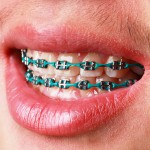
The application of orthodontic force triggers changes affecting dental support and pulp changes allowing movement of the teeth. Studies have reported changes in the dental pulp after applying orthodontic force and a knowledge of these is important minimise damage to the pulp and supporting tissues.
The aim of this review was to evaluate the clinical and radiographic findings of orthodontic force application on the dental pulp.
Methods
A protocol for the review was registered on the PROSPERO database. Searches were conducted in the Cochrane Library, Embase, Google Scholar, Latin American and Caribbean Health Sciences (LILACS), Medline/PubMed, OpenGrey, ProQuest, Scopus, and Web of Science databases. Trials and observational studies evaluating clinical or radiographic findings compatible with dental pulp changes due to orthodontic force were considered. Two reviewers independently selected studies and extracted data. Risk of bias was assessed by 3 reviewers using the Newcastle-Ottawa Scale for case-control and cohort studies and the Cochrane Collaboration Risk of Bias 2.0 tool for randomised controlled trials (RCTs). The certainty of the evidence was assessed using the GRADE approach.
Results
- 26 studies (18 case-control, 6 cohort and 2 RCTs) were included.
- 6 of the case-control studies were considered to be at low risk of bias 10 at moderate risk and 2 at high risk.
- All the cohort studies were classified as moderate risk of bias and both RCTs had some concerns.
- 11 studies evaluated clinical responses to pulpal sensibility when teeth were subjected to different forces.
- 7 studies evaluated pulpal blood flow.
- 5 studies evaluated pulp stone formation after fixed orthodontic treatment.
- 4 studies evaluated internal dimensions of the pulp cavity.
- Orthodontic force application was associated with pulpal sensibility response changes and pulpal blood flow changes.
- Radiographic findings seen included changes in the pulp cavity volume and the incidence of pulp stone formation.
- The certainty of the evidence was rated very low for all outcomes, pulpal sensibility, pulpal blood flow, pulp cavity volume and pulp stone formation using the GRADE approach.
Conclusions
The authors concluded: –
…. orthodontically moved teeth may present an immediate reduction in pulpal blood flow, an increased pulpal sensibility response to pulp tests, an increased incidence of pulp stones, and changes in the pulp cavity dimensions. These results suggest that the clinician has effective non-invasive methods to assess health and possible pulp changes during orthodontic treatment.
Comments
The review authors preregistered their protocol on PROSPERO searched a wide range of databases with no restrictions. and have followed a standard systematic review methodological approach. While 26 studies have been included most have a small sample size with a median of 24 patients (range 6 to 545). The studies were mainly observational with no standardisation of the orthodontic force applied or of the assessment methods used in the studies so consequently a narrative summary of the findings was presented.
While the findings suggest that the application of orthodontic force could promote, an increase in pulpal sensibility clinical response, an immediate decrease in pulpal blood flow, changes in pulp cavity volume, and an increase in the incidence of pulp stone formation the very low certainty evidence available means that these findings should be interpreted very cautiously. As the study authors note further research on this topic requires high quality, well conducted RCTs with larger sample sizes appropriate follow up times and standardised evaluation method to improve the certainty of evidence.
Links
Primary Paper
Vitali FC, Cardoso IV, Mello FW, Flores-Mir C, Andrada AC, Dutra-Horstmann KL, Duque TM. Association between Orthodontic Force and Dental Pulp Changes: A Systematic Review of Clinical and Radiographic Outcomes. J Endod. 2022 Mar;48(3):298-311. doi: 10.1016/j.joen.2021.11.018. Epub 2021 Dec 7. PMID: 34890594.
Other references
Dental Elf – 16th Oct 2012
Orthodontic tooth movement and its effect on the dental pulp
Dental Elf – 9th Dec 2019
Orthodontics: How much force is needed to move teeth with fixed appliances?
Dental Elf – 19th May 2021
